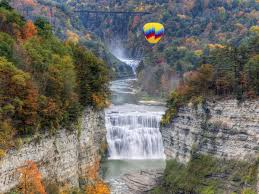
The Fascinating World of Zoos
Zoos: A Gateway to the Animal Kingdom
Zoos have long been a source of wonder and education for people of all ages. These unique establishments offer a glimpse into the diverse and fascinating world of animals, allowing visitors to learn about different species, their habitats, behaviors, and conservation efforts.
One of the primary purposes of zoos is to provide a safe environment for animals to thrive while also serving as centers for research and conservation. Through carefully designed exhibits and educational programs, zoos play a crucial role in raising awareness about wildlife preservation and environmental issues.
Visiting a zoo can be an enriching experience for both children and adults. It offers an opportunity to observe animals up close, learn about their natural behaviors, and gain a deeper appreciation for the importance of biodiversity. Many zoos also offer interactive activities such as feeding sessions, animal encounters, and guided tours that allow visitors to engage with the animals in meaningful ways.
Moreover, zoos contribute to species conservation through breeding programs aimed at maintaining genetic diversity and preventing extinction. By participating in collaborative efforts with other zoos and wildlife organizations, zoos play a vital role in safeguarding endangered species and reintroducing them into their natural habitats.
While controversies surrounding animal welfare in zoos exist, many accredited institutions adhere to strict standards ensuring the well-being of their animal residents. These zoos prioritize enrichment activities, proper healthcare, spacious enclosures mimicking natural habitats, and behavioral research to ensure that the animals lead fulfilling lives.
In conclusion, zoos serve as important educational resources that foster a sense of wonder and appreciation for the natural world. By supporting conservation efforts and promoting awareness about wildlife protection, zoos play a crucial role in preserving our planet’s biodiversity for future generations.
9 Compelling Benefits of Zoos: Education, Conservation, and Beyond
- Zoos provide educational opportunities for visitors to learn about different animal species.
- They play a key role in wildlife conservation efforts, helping protect endangered species.
- Zoos offer a safe environment for animals to live and thrive under professional care.
- Visiting zoos can inspire a sense of wonder and appreciation for the natural world.
- Many zoos conduct research that contributes to our understanding of animal behavior and biology.
- Zoos provide entertainment and recreational activities for families and individuals of all ages.
- They offer unique opportunities to observe rare or exotic animals up close that one may not encounter otherwise.
- Zoos support local economies by creating jobs and attracting tourism to the area.
- Some zoos participate in breeding programs that help maintain genetic diversity among endangered species.
Seven Major Concerns Regarding Animal Welfare and Natural Behavior in Zoos
- Confinement of animals in limited spaces
- Disruption of natural behaviors and social structures
- Stress and psychological issues for some animals
- Potential lack of proper enrichment activities
- Risk of injuries or illnesses due to captivity
- Concerns about animal welfare and treatment
- Limited space for some species to exhibit natural behaviors
Zoos provide educational opportunities for visitors to learn about different animal species.
Zoos offer invaluable educational opportunities for visitors to expand their knowledge and understanding of diverse animal species. Through informative exhibits, interactive programs, and guided tours, zoos provide a platform for people of all ages to learn about the unique characteristics, behaviors, and habitats of various animals. By fostering a sense of curiosity and appreciation for wildlife, zoos play a vital role in raising awareness about conservation efforts and inspiring a deeper connection with the natural world.
They play a key role in wildlife conservation efforts, helping protect endangered species.
Zoos play a crucial role in wildlife conservation efforts by serving as safe havens for endangered species. Through carefully managed breeding programs and collaborative partnerships with other zoos and wildlife organizations, zoos help protect and preserve vulnerable animal populations. By raising awareness about the plight of endangered species and supporting research initiatives, zoos contribute significantly to the global efforts aimed at preventing extinction and promoting biodiversity conservation.
Zoos offer a safe environment for animals to live and thrive under professional care.
Zoos provide a secure and nurturing environment where animals can live and thrive under the expert care of dedicated professionals. By ensuring that the animals’ physical and psychological needs are met, zoos play a crucial role in safeguarding endangered species, promoting conservation efforts, and raising awareness about wildlife preservation. The professional staff at zoos are trained to provide proper nutrition, medical care, enrichment activities, and spacious habitats that closely resemble the animals’ natural environments. This commitment to animal welfare helps to ensure that the residents of zoos lead healthy and fulfilling lives while also contributing to important research and conservation initiatives.
Visiting zoos can inspire a sense of wonder and appreciation for the natural world.
Visiting zoos can inspire a sense of wonder and appreciation for the natural world by providing an up-close and personal experience with a diverse array of animal species. Observing these magnificent creatures in their carefully designed habitats can spark curiosity and admiration for the beauty and complexity of the animal kingdom. Through educational programs and interactive exhibits, zoos offer valuable insights into the importance of conservation and environmental stewardship, encouraging visitors to develop a deeper connection with nature and a heightened sense of responsibility towards protecting wildlife and their habitats.
Many zoos conduct research that contributes to our understanding of animal behavior and biology.
Many zoos conduct valuable research that significantly contributes to our understanding of animal behavior and biology. Through studying animals in controlled environments, researchers can gather data on various aspects of their lives, such as social interactions, feeding habits, and reproduction patterns. This research not only enhances our knowledge of different species but also provides insights that can be applied to conservation efforts in the wild. By delving into the intricacies of animal behavior and biology, zoos play a crucial role in advancing scientific knowledge and promoting the welfare of both captive and wild animals alike.
Zoos provide entertainment and recreational activities for families and individuals of all ages.
Zoos offer a diverse range of entertainment and recreational activities for families and individuals of all ages, making them popular destinations for fun outings and educational experiences. From interactive animal encounters to engaging wildlife shows, zoos provide a unique opportunity for visitors to connect with nature and learn about different species in an enjoyable setting. Whether it’s a leisurely stroll through beautifully landscaped exhibits or attending special events and feeding sessions, zoos cater to a wide audience, creating memorable moments that inspire curiosity and appreciation for the animal kingdom.
They offer unique opportunities to observe rare or exotic animals up close that one may not encounter otherwise.
Zoos provide invaluable opportunities for people to witness rare and exotic animals up close, offering a glimpse into the beauty and diversity of the animal kingdom that may be otherwise inaccessible. By showcasing these unique species in carefully curated exhibits, zoos not only spark curiosity and wonder but also contribute to raising awareness about the importance of conservation and biodiversity. The chance to observe these fascinating creatures in person can inspire a deeper connection with nature and instill a sense of responsibility towards protecting endangered species for future generations.
Zoos support local economies by creating jobs and attracting tourism to the area.
Zoos play a significant role in supporting local economies by generating employment opportunities and attracting tourism to the surrounding area. The presence of a zoo not only creates jobs for individuals in various sectors such as animal care, education, maintenance, and administration but also stimulates economic growth through increased visitor spending on accommodations, dining, and retail. By serving as popular attractions that draw both local residents and tourists, zoos contribute to the overall vitality of the community by fostering a thriving tourism industry and boosting revenue for businesses in the area.
Some zoos participate in breeding programs that help maintain genetic diversity among endangered species.
One significant benefit of zoos is their participation in breeding programs that contribute to the preservation of genetic diversity among endangered species. By carefully managing breeding efforts, zoos play a crucial role in preventing the extinction of vulnerable animal populations. These programs help maintain healthy gene pools and ensure the long-term survival of species that are at risk in the wild. Through collaborative conservation initiatives, zoos help safeguard the genetic heritage of endangered animals and work towards restoring their populations in their natural habitats.
Confinement of animals in limited spaces
One of the significant drawbacks of zoos is the confinement of animals in limited spaces. While zoos aim to provide a safe environment for animals, the constraints of captivity can lead to physical and psychological challenges for the residents. Animals that are accustomed to roaming vast territories in the wild may experience stress, boredom, and restricted movement in confined enclosures. This confinement can hinder their natural behaviors, social interactions, and overall well-being, raising ethical concerns about the impact of captivity on animal welfare. Efforts to address this issue include creating more spacious and enriching habitats within zoos to promote the physical and mental health of the animals in their care.
Disruption of natural behaviors and social structures
One significant con of zoos is the disruption of natural behaviors and social structures among animals. In the confined spaces of zoos, many species are unable to exhibit their instinctual behaviors and interact with others as they would in the wild. This can lead to stress, boredom, and even aggression among animals, affecting their overall well-being and quality of life. The artificial environments of zoos often fail to replicate the complex social dynamics and natural habitats that animals rely on for their physical and mental health. Consequently, the disruption of natural behaviors and social structures in zoos raises ethical concerns about the welfare of captive animals and challenges the justification for keeping them in captivity for human entertainment.
Stress and psychological issues for some animals
One significant con of zoos is the potential stress and psychological issues that some animals may experience due to captivity. Being confined to limited spaces, separated from their natural habitats, and subjected to constant human observation can lead to increased levels of stress, anxiety, and even depression in certain species. These psychological challenges can manifest in behaviors such as pacing, self-harm, aggression, or withdrawal, indicating that the animals are struggling to cope with the unnatural conditions of captivity. It is essential for zoos to prioritize the mental well-being of their animal residents by providing enriching environments, opportunities for mental stimulation, and appropriate social interactions to mitigate the negative effects of confinement on their psychological health.
Potential lack of proper enrichment activities
One significant con of zoos is the potential lack of proper enrichment activities for animals. In some cases, animals may not have access to stimulating environments or activities that mimic their natural behaviors, leading to boredom, stress, and behavioral issues. Without adequate mental and physical stimulation, animals in zoos may exhibit stereotypic behaviors such as pacing, self-harm, or aggression. It is essential for zoos to prioritize enrichment programs tailored to each species’ specific needs to ensure the well-being and psychological health of their animal residents.
Risk of injuries or illnesses due to captivity
One significant con of zoos is the risk of injuries or illnesses that animals may experience due to their captivity. Living in confined spaces and artificial environments can lead to physical and psychological stress for animals, making them more susceptible to health issues such as obesity, behavioral disorders, and infectious diseases. Additionally, the close proximity of different species in zoos can increase the likelihood of inter-species conflicts and injuries. Despite efforts to provide proper care and enrichment activities, the inherent limitations of captivity pose a constant threat to the well-being of animals in zoos.
Concerns about animal welfare and treatment
Concerns about animal welfare and treatment in zoos are valid and important considerations that cannot be overlooked. Critics argue that confining wild animals to limited spaces can lead to stress, behavioral issues, and physical health problems. The unnatural environments of zoos may not adequately meet the complex needs of certain species, potentially compromising their well-being. It is essential for zoos to prioritize the mental and physical health of their animal residents by providing enriching habitats, proper medical care, and opportunities for natural behaviors to ensure a higher quality of life for the animals under their care.
Limited space for some species to exhibit natural behaviors
One significant con of zoos is the limited space available for some species to exhibit their natural behaviors. In the confined environments of zoos, animals may not have enough room to engage in activities that are essential to their physical and mental well-being. This restriction can lead to stress, boredom, and the development of abnormal behaviors in animals that would otherwise roam vast territories in the wild. The inability to fully express their natural instincts and behaviors can have detrimental effects on the overall welfare and health of these animals, raising ethical concerns about the captivity of wildlife in zoo settings.









